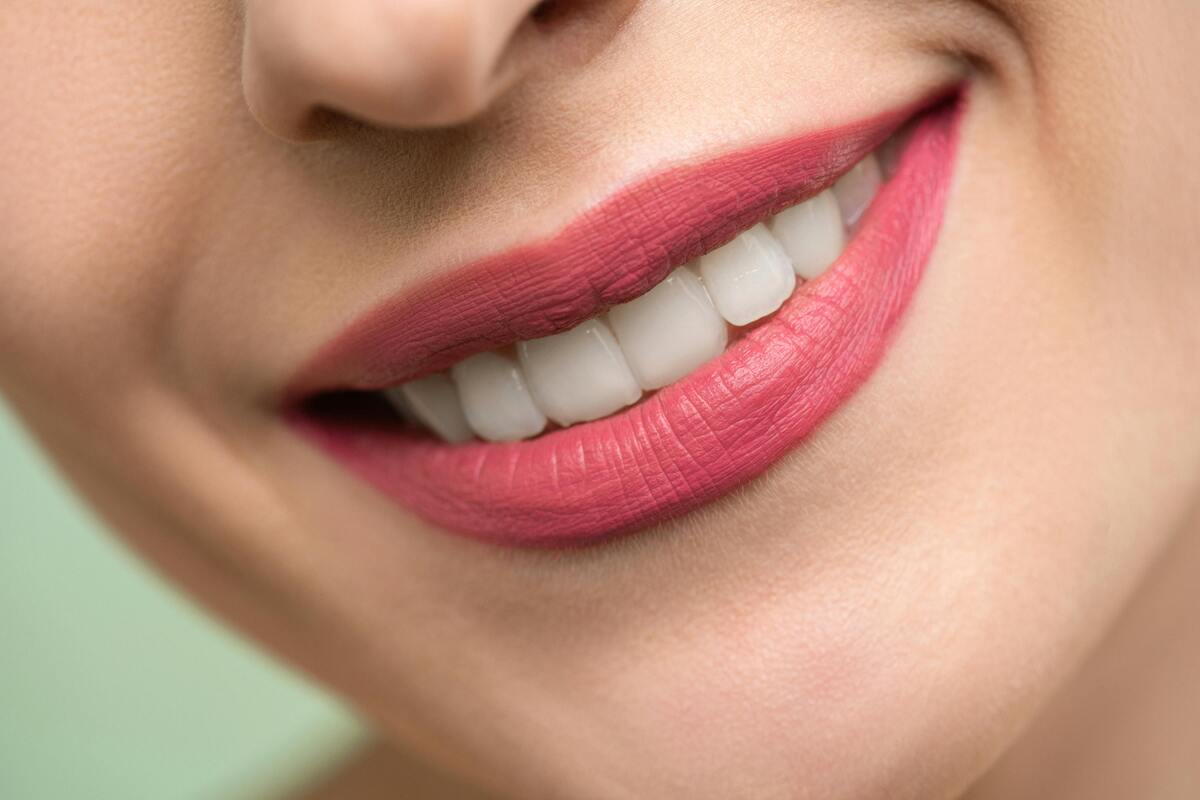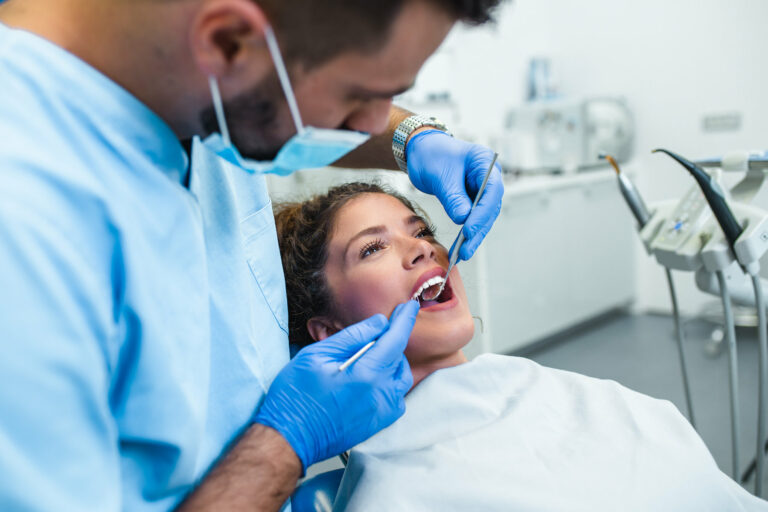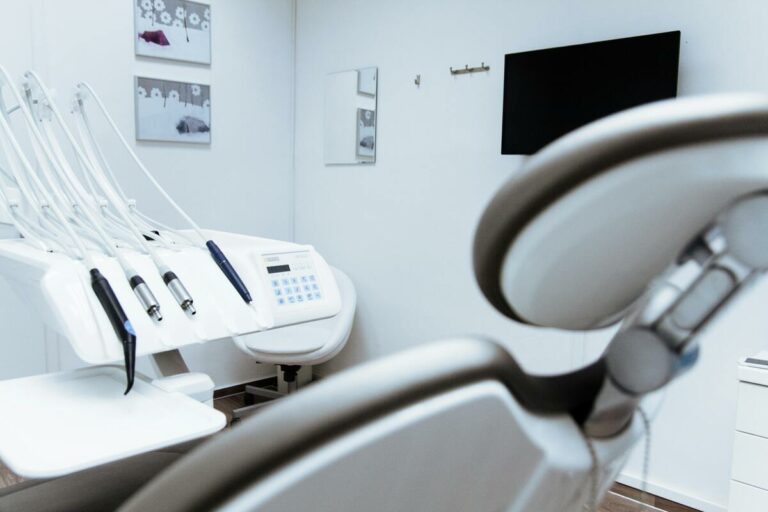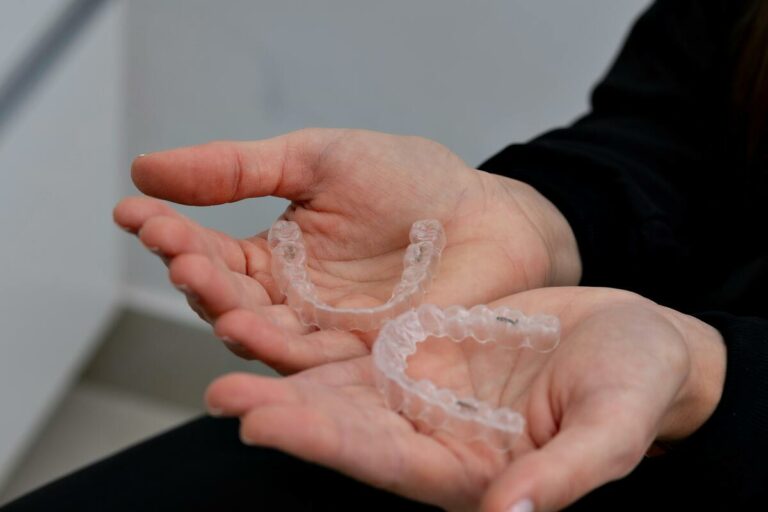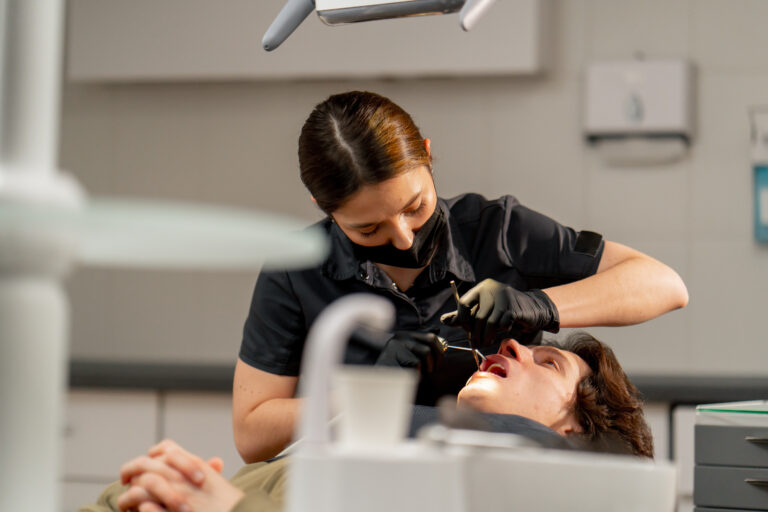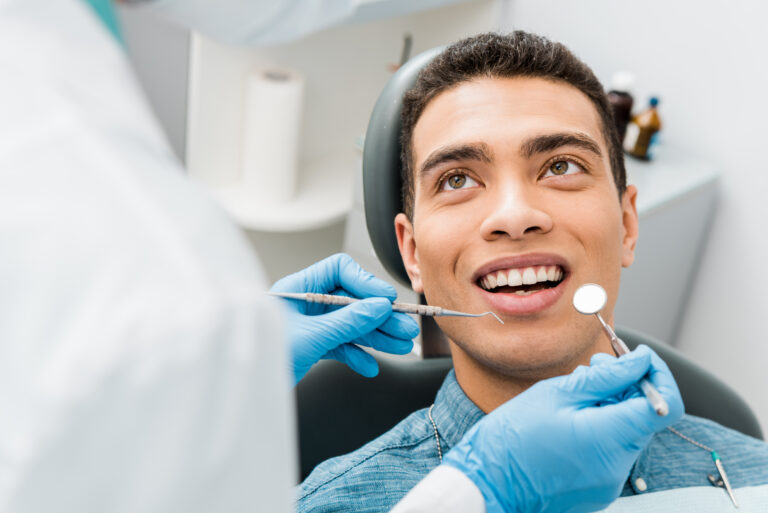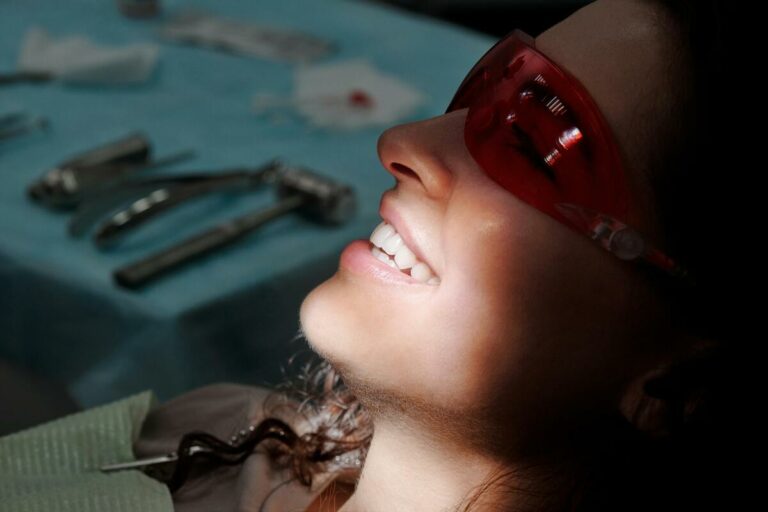Best Teeth Whitening Services in SoHo: Professional vs. At-Home Options
In the quest for the best teeth whitening services in SoHo, individuals are often faced with the decision between professional in-office treatments and at-home options. Professional treatments utilize high-concentration bleaching agents, providing significant results quickly, whereas at-home kits offer gradual improvement with lower active ingredient concentrations. Safety, effectiveness, and cost are key factors influencing this choice. Understanding these aspects can guide patients in selecting the most suitable method for their oral health needs.
Overview of Teeth Whitening Options
Teeth whitening, a popular cosmetic dental procedure, encompasses a variety of methods designed to enhance dental aesthetics by reducing discoloration and enhancing the natural brightness of teeth. Underlying teeth discoloration causes include intrinsic factors such as age-related dentin changes and extrinsic factors like dietary habits, smoking, and medication. Whitening product ingredients typically involve hydrogen peroxide or carbamide peroxide, which act as bleaching agents penetrating the enamel to alter the chromogenic compounds responsible for discoloration. Alternative methods might include non-peroxide options using sodium bicarbonate or activated charcoal, though their efficacy varies. Patients should consider potential tooth sensitivity and enamel integrity when selecting products. Understanding these options aids in making informed decisions for achieving the best aesthetic outcomes while preserving dental health.
Professional In-Office Teeth Whitening Treatments
Professional in-office teeth whitening treatments offer immediate results, ensuring patients leave with noticeably brighter smiles. These procedures are conducted under expert care, utilizing advanced whitening agents and techniques that are tailored to individual dental needs. Customized treatment plans are developed to optimize whitening outcomes while minimizing sensitivity and ensuring patient comfort.
Immediate Results Guaranteed
For individuals seeking a radiant smile, in-office teeth whitening treatments offer unparalleled efficacy and immediate results. Utilizing advanced bleaching agents, such as hydrogen peroxide or carbamide peroxide, these procedures guarantee quick transformations. The high concentration of active ingredients in these professional formulations assures immediate satisfaction, often lightening teeth by several shades within a single session.
The process involves applying the whitening agent directly to the enamel, followed by activation through specialized light or laser technology. This enhances the bleaching effect, penetrating deep into the tooth structure to eliminate intrinsic and extrinsic stains. The controlled environment of a dental office guarantees precise application, minimizing the risk of sensitivity or gum irritation. In-office treatments are ideal for patients desiring swift, noticeable improvements in dental aesthetics.
Expert Care Provided
Guaranteeing expert care in teeth whitening, dental professionals meticulously design in-office treatments to maximize both safety and effectiveness. By employing expert techniques, these clinicians utilize advanced technologies, such as LED light activation and high-concentration peroxide gels, to achieve ideal results. These methods are administered under strict clinical conditions, minimizing risks associated with tooth sensitivity and gum irritation.
Personalized care is paramount, as dental practitioners conduct thorough oral assessments to tailor procedures according to individual dental anatomy and staining patterns. This approach guarantees that each patient receives a bespoke whitening experience, enhancing both aesthetic appeal and oral health. By adhering to stringent protocols, professional in-office treatments not only deliver superior whitening outcomes but also provide patients with the assurance of receiving the highest standard of dental care.
Customized Treatment Plans
In the domain of teeth whitening, the implementation of customized treatment plans elevates the in-office experience by addressing the unique requirements of each patient. Dental professionals initiate the process with personalized assessments, meticulously evaluating the individual’s dental history, existing tooth coloration, and sensitivity levels. This thorough analysis enables the formulation of tailored solutions, enhancing whitening efficacy and patient comfort. Advanced whitening agents, often more concentrated than at-home alternatives, are applied with precision under controlled conditions. The strategic application guarantees uniform whitening while minimizing potential side effects. Furthermore, ongoing evaluations allow for adjustments, guaranteeing ideal outcomes. By integrating patient-specific variables into the whitening protocol, in-office treatments provide a superior, bespoke approach, setting a professional standard that surpasses generic at-home kits.
At-Home Teeth Whitening Kits
At-home teeth whitening kits offer a range of options, including whitening strips, trays with gel, and LED light systems, each varying in formulation and delivery method. Proper application is essential to optimizing their efficacy; adherence to manufacturer instructions guarantees maximum whitening results while minimizing potential side effects such as tooth sensitivity. Clinical studies indicate that while these kits can achieve noticeable improvements in tooth shade, their effectiveness may be less pronounced compared to professional in-office treatments.
Types of Whitening Kits
Teeth whitening kits designed for home use provide an accessible and cost-effective solution for achieving a brighter smile. These kits primarily include gel formulations and whitening strips, both of which utilize active ingredients such as hydrogen peroxide or carbamide peroxide. Gel formulations are typically applied via trays that conform to dental anatomy, ensuring even distribution across the enamel surface. Whitening strips, on the other hand, are thin, flexible strips coated with a peroxide-based gel. They adhere directly to the teeth, making them a popular choice for ease of use. Both methods aim to oxidize stains, thereby lightening the tooth color. Understanding the chemical composition and delivery mechanisms of these products empowers users to make informed decisions about their oral health.
Application and Effectiveness
A significant factor influencing consumer satisfaction with at-home teeth whitening kits is the proper application of the product, which directly impacts its effectiveness. Proper application techniques are essential for maximizing results, ensuring the whitening agents are evenly distributed across the tooth surface. Users must adhere to the manufacturer’s instructions for ideal outcomes, as deviations can compromise the intended effect.
Effectiveness duration, or the length of time the whitening results last, varies depending on individual dietary habits and oral hygiene practices. Typically, the results from at-home kits may last from a few weeks to several months. However, consistent application and maintenance are vital for prolonging the whitening effect. Patients should consult dental professionals for guidance on the best practices tailored to their specific needs.
Comparing Costs: Professional vs. At-Home
When evaluating the financial implications of teeth whitening, it is essential to distinguish between professional dental services and at-home whitening kits. A cost comparison reveals that professional whitening services, typically administered by dental practitioners in a clinical setting, involve higher upfront costs. These costs are attributed to the use of advanced whitening agents, specialized equipment, and the expertise of dental professionals. In contrast, at-home whitening kits present a more economically accessible alternative, often available at a fraction of the price. However, the investment value of professional treatments can be justified by the potential for more uniform results and reduced risk of tooth sensitivity. Ultimately, the decision involves weighing immediate financial expenditure against long-term aesthetic outcomes and oral health considerations.
Effectiveness and Speed of Results
Considering the financial aspects of teeth whitening, it is equally important to assess the effectiveness and speed of results offered by different methods. Professional teeth whitening typically provides more rapid and pronounced results due to higher concentrations of whitening agents and advanced dental technology. These methods are particularly effective against intrinsic teeth staining causes, such as those from medications or trauma. Whitening longevity, however, varies based on individual habits and oral care practices. At-home options, while slower, utilize lower concentrations of active ingredients, making them suitable for extrinsic stains caused by food and beverages. The results, although less immediate, can be maintained over time with consistent application. Ultimately, the choice between professional and at-home solutions depends on the desired speed and extent of whitening.
Safety and Potential Side Effects
While teeth whitening is a popular cosmetic procedure, it is imperative to understand its safety profile and potential side effects. Sensitivity concerns are prevalent, often arising from the exposure of dentin tubules during the bleaching process. To mitigate such effects, employing safety precautions is essential. These include using lower concentration bleaching agents and ensuring proper application techniques. Professional services typically offer customized treatments that minimize adverse reactions. At-home options, while convenient, may pose increased risks if not used according to manufacturer guidelines. Potential side effects also include gum irritation and enamel erosion if protocols are not adhered to. Patients are advised to consult dental professionals for an assessment of oral health status before undergoing any whitening procedure, ensuring a tailored and safe approach.
Factors to Consider Before Choosing
Before selecting a teeth whitening service, individuals should evaluate several critical factors to guarantee ideal outcomes and safety. First, cost considerations play a pivotal role. Professional in-office treatments generally incur higher expenses compared to at-home kits, which might influence the decision-making process based on budget constraints. Second, treatment duration is paramount. Professional treatments often yield faster results, typically within a single session, whereas at-home options may require consistent application over weeks to achieve comparable outcomes. Additionally, reviewing the concentration of active ingredients such as hydrogen peroxide is essential, as higher concentrations can offer more rapid results but may increase the risk of tooth sensitivity. Consulting with a dental professional can further aid in tailoring the choice to individual oral health needs.
Popular Teeth Whitening Brands in SoHo
SoHo boasts several prominent teeth whitening brands that cater to a diverse clientele seeking effective dental aesthetics. Among these, Opalescence and Zoom are the popular whitening brands frequently chosen by patients. Opalescence is favored for its custom-fit trays and carbamide peroxide gel, allowing for tailored whitening based on individual enamel sensitivity. Meanwhile, Zoom’s in-office treatment is renowned for its rapid results, utilizing a hydrogen peroxide gel activated by a specialized light to achieve significant shade improvement in a single session.
SoHo preferences also include Crest 3D Whitestrips for at-home convenience, offering gradual whitening with minimal tooth sensitivity. Clinicians often recommend these options based on patient-specific dental history and desired outcomes, ensuring ideal results while maintaining enamel integrity. This strategic approach aligns with SoHo’s emphasis on personalized dental care.
Tips for Maintaining Your Whitened Smile
Achieving a brighter smile with the help of renowned teeth whitening brands is just the beginning for many patients in SoHo. Post whitening care is essential to preserve the results of the treatment. To guarantee long term maintenance, patients should avoid consumables that cause staining, such as coffee, red wine, and tobacco. Daily oral hygiene practices, including brushing with fluoride toothpaste and flossing, are paramount to prevent plaque accumulation, which can compromise whiteness. The use of a straw can minimize contact with staining beverages. Regular dental check-ups allow for professional cleaning and early detection of potential discoloration. Utilizing whitening toothpastes and touch-up kits, recommended by dental professionals, can assist in sustaining the desired shade. Compliance with these guidelines promotes enduring brilliance.
Frequently Asked Questions
How Long Does Each Teeth Whitening Session Typically Last?
Teeth whitening session duration varies; professional treatments last 60-90 minutes, while at-home options require daily 15-30 minute applications. Treatment frequency depends on desired results: professionals suggest biannual visits, whereas at-home kits often necessitate weekly use.
Are There Any Dietary Restrictions After Whitening?
Patients must adhere to specific dietary guidelines post whitening care. Avoid consuming staining agents like coffee, red wine, and berries for 48 hours. Acidic foods should also be limited to prevent tooth sensitivity and maintain ideal results.
Can Teeth Whitening Cause Increased Sensitivity to Cold?
Teeth whitening can indeed cause increased sensitivity to cold. This occurs when whitening techniques temporarily open dentinal tubules. Sensitivity management involves using desensitizing agents pre-and post-treatment, ensuring patient comfort through professional guidance and appropriate product selection.
Is Teeth Whitening Safe for Pregnant or Nursing Women?
Teeth whitening safety for pregnant women is not well-established due to limited research. Experts advise postponing cosmetic dental treatments during pregnancy and nursing to avoid potential risks from whitening agents’ absorption or ingestion, prioritizing maternal and fetal health.
How Often Should Teeth Whitening Treatments Be Repeated?
The recommended teeth whitening frequency varies, typically every 6-12 months, depending on individual dietary habits and oral hygiene. Maintenance treatments may be required more often for those consuming staining substances like coffee, tea, or tobacco.
